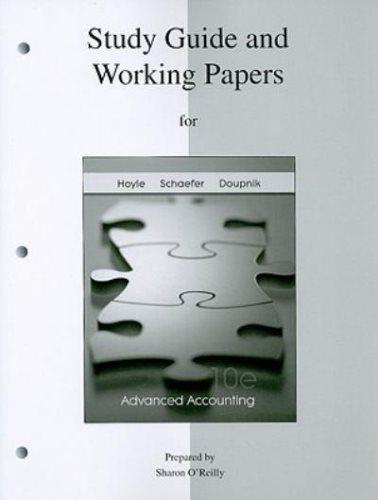Question
For this mini-case, you will be tasked with conducting some cost-volume-profit (and related) analysis, and will have an opportunity to practice communicating the results of
For this mini-case, you will be tasked with conducting some cost-volume-profit (and related)
analysis, and will have an opportunity to practice communicating the results of that analysis in
written form. Compile a document (PDF for
the final output, please) with your responses and work, and submit it via Canvas by the deadline
announced.
Kelly Kneppy owns a company that manufactures and sells camping equipment and outdoor gear.
Kelly's latest creation is the Bear-B-Gone, a tent constructed of Kevlar and reinforced steel mesh
that could theoretically protect campers (who hadn't followed appropriate food storage guidelines)
from bear attacks. Kelly believes the Bear-B-Gone offers many of the same desirable features as
other tents on the market, and that this extreme safety feature will make it one of the best-selling
tents in short order.
Kelly can make the Bear-B-Gone with one of two available technologies. The first is a labor-
intensive process, that if chosen will require $720,000 per year in fixed overhead costs, and the
following in variable costs of production per unit: direct materials of $45, direct labor of $65, and
overhead of $15. The second technology is a more automated (machine-dependent) process, that
if chosen will require $1,540,000 per year in fixed overhead costs, and the following in variable
costs of production: direct materials of $40 (savings due to less waste in the automated process),
direct labor of $5, and overhead of $60. Kelly believes she can sell the tent for $175.
1) What is Kelly's break-even point in units (and sales dollars) with the labor-intensive
production process? What is the break-even point in units (and sales dollars) with the more
automated process?
2) Which process is preferred if sales are expected to be 30,000 units? How about at 50,000
units? At what sales level would the two processes yield equivalent profit (round to the
nearest whole unit)?
3) Suppose possible sales are expected to range between 30,000 and 50,000 units as noted
above, and that production will equal sales (no beginning/ending inventory). Which
process has the greater
range
in profit? Why might this be a factor for Kelly to consider in
making her decision?
4) Assume sales were to fall at the midpoint of the projections above, 40,000 units. Following
up to the previous question, under which process would you say Kelly's profit is more
sensitive to changes in demand (sales)? Why? Does this make one of the options strictly
"better" than the other? Why or why not?
5) Suppose Kelly decided to go with the labor-intensive process. Suppose also that, in the first
year of operations, Kelly produces 70,000 tents and sells 55,000. What is the unit product
cost of the tents under variable costing? Under absorption costing? Round to two decimal
places as needed. If Kelly prepared GAAP-compliant financial statements in order to share
with potential investors, would her "over" production make her appear more or less
profitable (or no different) as compared to if production had been equal to sales at 55,000
units?
6) What other factors might affect Kelly's decision to focus on capital- vs. labor-intensive
processes? To get you started, consider things from earlier in this class
and
outside of a
strictly managerial accounting realm, such as taxes (or tax credits for certain business
operations), product quality, and public perception (using employees vs. automation). To
strengthen your response, you might wish to refer to a source or two from business or
popular press that illustrates how the factor(s) you're discussing affected a real
organization in a positive or negative manner.
7) Prepare a
brief
memo to Kelly, outlining your findings. You do not necessarily need to
include all of the "numbers" you've calculated above, but you should include anything that
you think would best convey the most important points of your analysis. Feel free to
include components that aren't part of the formal requirements in items #1-6, if you deem
them critical.
Step by Step Solution
There are 3 Steps involved in it
Step: 1

Get Instant Access to Expert-Tailored Solutions
See step-by-step solutions with expert insights and AI powered tools for academic success
Step: 2

Step: 3

Ace Your Homework with AI
Get the answers you need in no time with our AI-driven, step-by-step assistance
Get Started


